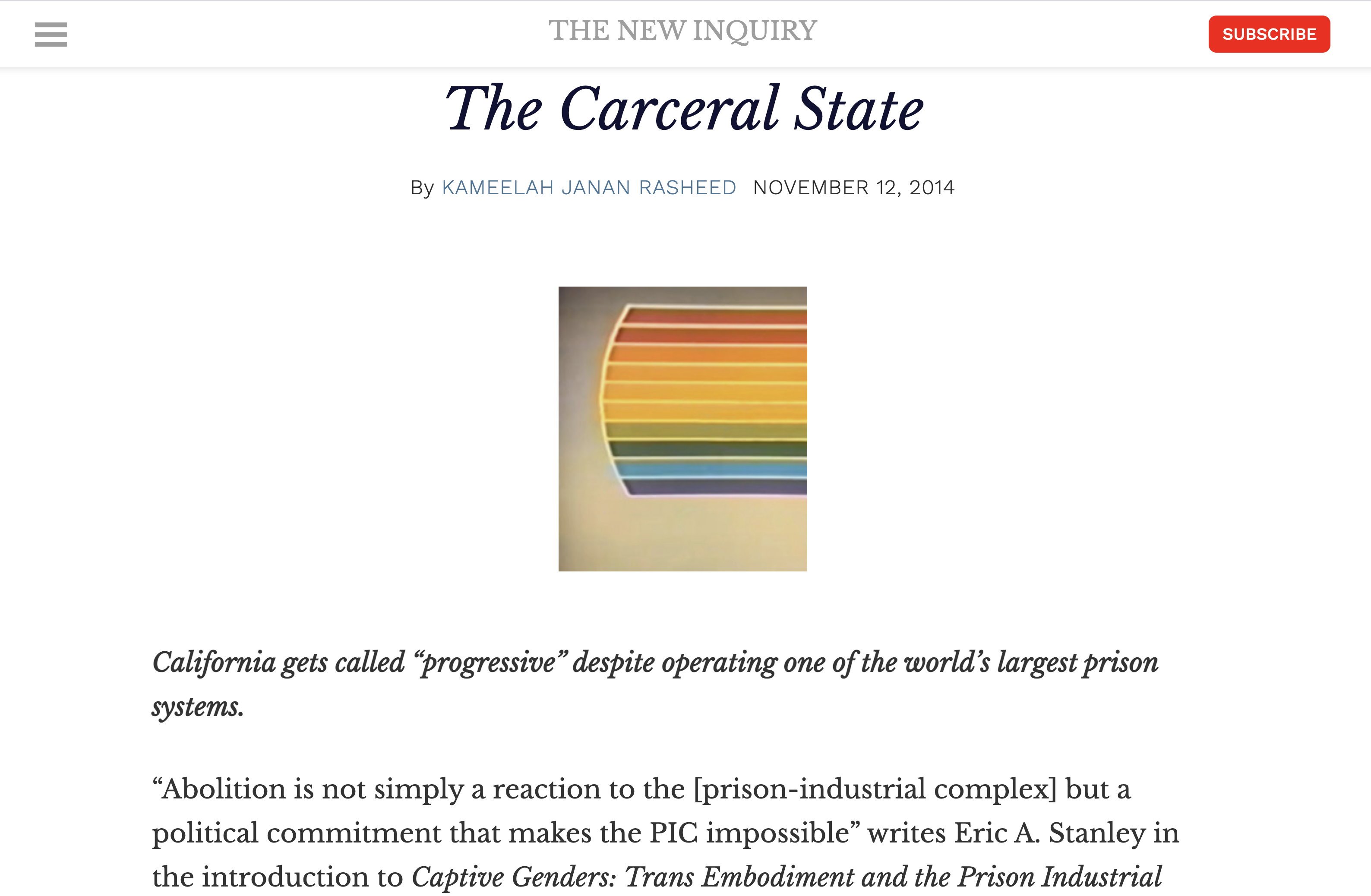The New Inquiry
November 12, 2014
Read more
KJR: In concrete terms, what does it mean to continue believing that the prison system is “broken”?
Eric Stanley: If we believe that the prison system is broken, then we must also believe in its ability to be fixed. Here we can see how the PIC keeps functioning through the rehearsal of the “broken system” narrative. As Angela Davis and many others have argued, it is precisely through reform that the prison-industrial complex expands. We can see the materiality of this expansion through the mandatory increase in police in schools through Proposition 47.

